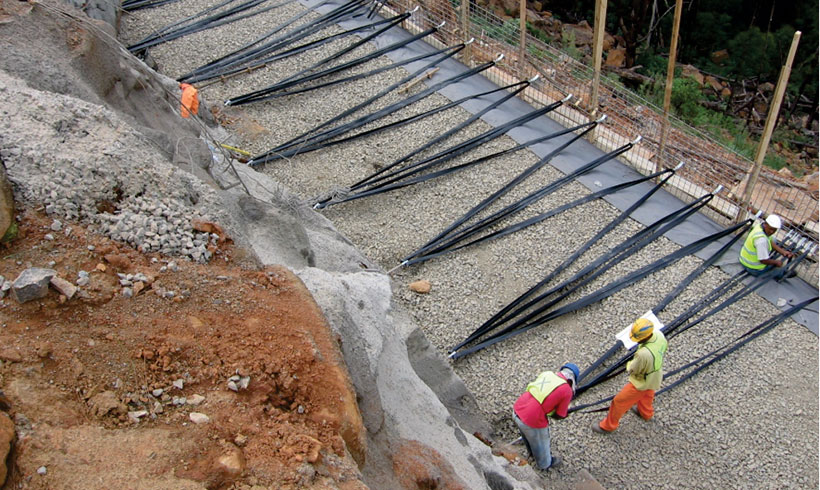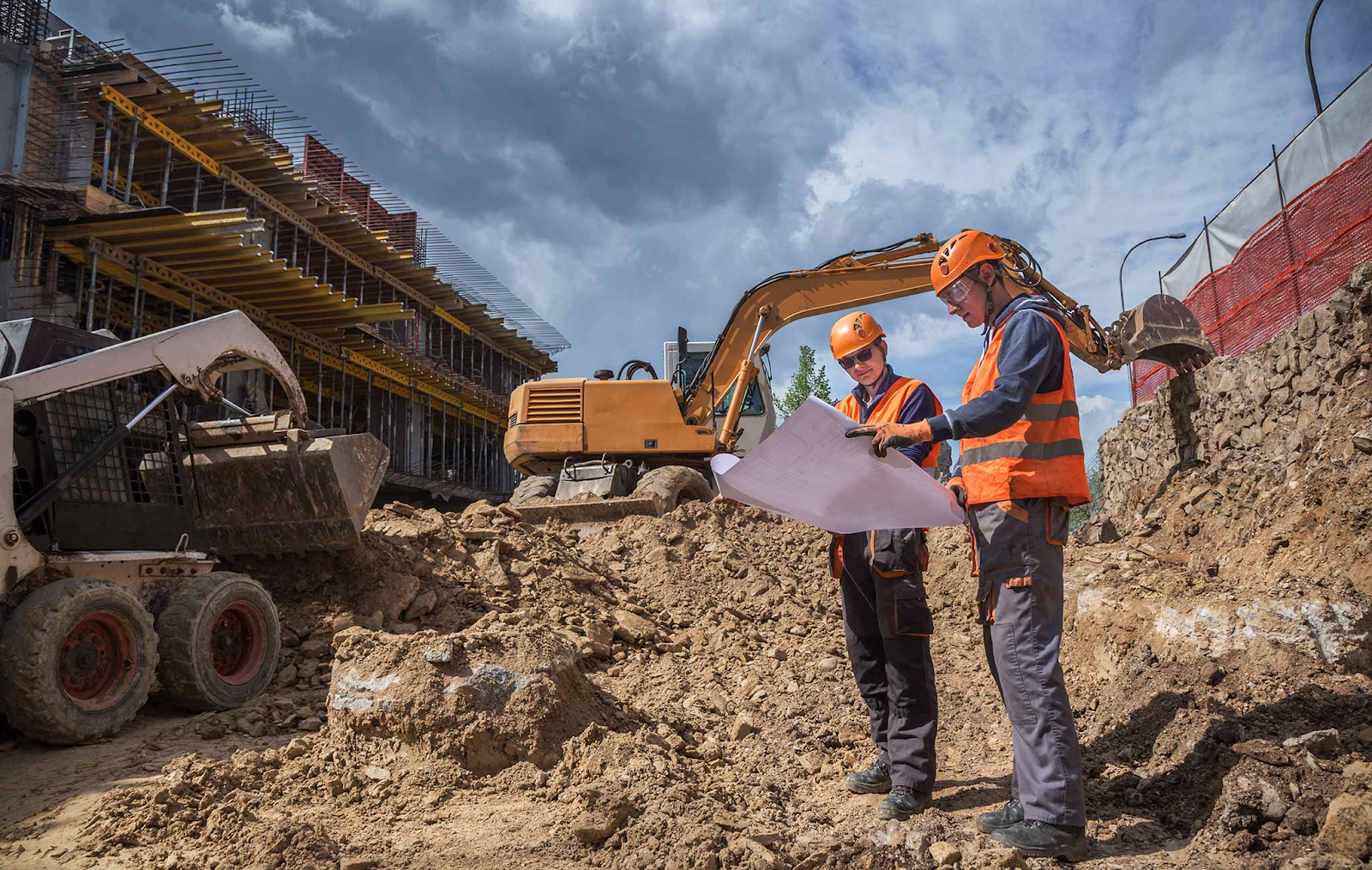The Facts About Geotechnical Engineering For Construction Projects Revealed
The Facts About Geotechnical Engineering For Construction Projects Revealed
Blog Article
Not known Details About Geotechnical Engineering For Construction Projects
Table of ContentsOur Geotechnical Engineering For Construction Projects DiariesThe Best Strategy To Use For Geotechnical Engineering For Construction ProjectsThe Best Strategy To Use For Geotechnical Engineering For Construction ProjectsThe Greatest Guide To Geotechnical Engineering For Construction ProjectsSome Known Incorrect Statements About Geotechnical Engineering For Construction Projects Excitement About Geotechnical Engineering For Construction ProjectsGeotechnical Engineering For Construction Projects Things To Know Before You Buy
and Kovacs, W. (1981 ), An Introduction to Geotechnical Design, Prentice-Hall, Inc. Deep Scan Tech (2023 ): Deep Check Technology reveals hidden structures at the website of Denmark's tallest structure. "Geofrost Coring". GEOFROST. Obtained 20 November 2020. Han, Jie (2015 ). Concepts and Technique of Ground Improvement. Wiley. ISBN 9781118421307. RAJU, V. R.Ground Enhancement Technologies and Instance Histories. Singapore: Research Study Posting Services. p. 809. ISBN978-981-08-3124-0. Ground Improvement Concepts And Applications In Asia. Pariseau, William G. (2011 ). Layout evaluation in rock technicians. CRC Press. Hegde, A.M. and Palsule P (Geotechnical Engineering for Construction Projects).S. (2020 ), Performance of Geosynthetics Reinforced Subgrade Subjected to Repeated Automobile Plenties: Experimental and Mathematical Researches.
Cengage Discovering, Stamford, 666 p. Atkinson, J., 2007. The mechanics of soils and foundations. Taylor & Francis, N.Y., 442 p. Floating Offshore Wind Generators: Responses in a Sea state Pareto Optimum Designs and Economic Analysis, P. Sclavounos et al., October 2007. Nicholson, D, Tse, C and Cent, C. (1999 ). The Observational Technique in ground design principles and applications.
The Ultimate Guide To Geotechnical Engineering For Construction Projects
Laboratory and field testing plays a critical duty in this process. By removing samples from the planet's subsurface and applying a collection of tests, geotechnical designers can anticipate the behaviour of dirt layers and assess their viability for various building and construction endeavours. The significance of geotechnical engineering in civil design can not be overemphasized, attributable to several variables: The preliminary action in any type of geotechnical study includes figuring out the soil kind at the building website.
Comprehending these features makes certain that just suitable soil types are picked for the growth, thereby preventing possible structural failures. The foundation works as the bedrock of any building task. Picking the ideal foundation kind is a choice that pivots on the comprehensive evaluation offered by geotechnical design. This ensures the longevity and security of frameworks by accommodating the lots they will bear.

Geotechnical website examination is an important step in the preparation and implementation of any kind of building and construction task. It entails the collection and analysis of information connected to the physical residential properties of dirt and rock underneath a recommended building and construction website. This info is important for the layout and building of secure, stable, and sustainable frameworks.
Our Geotechnical Engineering For Construction Projects Statements
In this blog site, we will explore the importance of geotechnical website investigation, its various parts, and just how it benefits construction jobs. Geotechnical website investigation, likewise known as subsurface expedition, involves a series of activities intended at identifying the dirt, rock, and groundwater conditions at a building and construction site. The key goals are to recognize prospective geotechnical dangers, assess the design residential properties of subsurface materials, and give suggestions for the layout and construction of structures, retaining wall surfaces, and various other structures.
This may include geological maps, aerial photos, previous examination reports, and historical information. The workdesk study helps in determining potential geotechnical issues and preparing the subsequent fieldwork. Complying with the desk research study, a site reconnaissance is carried out to visually examine the website and its environments. This entails observing the topography, water drainage patterns, existing frameworks, plant life, and any indicators of instability or disintegration.
Not known Factual Statements About Geotechnical Engineering For Construction Projects
Shallow examination pits are dug deep into to straight observe and example the soil and rock. This approach serves for examining the top layers of the subsurface and determining near-surface threats. Non-invasive geophysical techniques, such as seismic refraction, ground-penetrating radar (GPR), and electric resistivity tomography (ERT), are utilized to map subsurface problems and identify anomalies.
Dirt and rock samples collected during the area investigation undergo laboratory testing to determine their physical and mechanical residential or commercial properties. Usual lab examinations include grain dimension analysis, Atterberg restrictions, compaction tests, triaxial shear examinations, and loan consolidation tests. These examinations provide crucial data for geotechnical evaluation and design. The information accumulated from the desk research study, website reconnaissance, field examination, and laboratory testing are examined and analyzed to develop a detailed understanding of the subsurface conditions.
The key benefit of geotechnical site examination is guaranteeing the security and security of structures. By understanding the subsurface conditions, designers can make foundations and other structural aspects that can stand up to the loads and ecological forces they will be subjected to. This minimizes the risk of settlement, subsidence, and structural failing.
The Ultimate Guide To Geotechnical Engineering For Construction Projects
This makes certain effective and secure building practices. Geotechnical site investigations are often needed by developing codes and guidelines.
This details is indispensable for task managers, architects, and contractors in establishing practical schedules, budget plans, and backup plans. Geotechnical Engineering for Construction Projects. Skyscraper Building in a Coastal AreaIn a coastal city, a high-rise residential structure was intended on a site with thought loosened sand down payments and a high water table. A comprehensive geotechnical investigation, consisting of borehole exploration, CPT, and geophysical surveys, was conducted
Geotechnical Engineering For Construction Projects Can Be Fun For Everyone
Based upon these searchings for, the foundation style was modified to consist of deep stack foundations prolonging into stable strata, and ground improvement techniques, such as vibro-compaction, were implemented to mitigate liquefaction threats. This aggressive technique made sure the safety and security of the building while preventing expensive post-construction remediation. Infrastructure Growth on a Sloping TerrainA significant facilities task, involving the construction of a highway and bridges, was intended on an uneven terrain with steep inclines.

The Leaning Tower of Pisa (Italy), a famous architectural wonder, is well visit this page known for its Find Out More unintended tilt from significant geotechnical concerns. The tower's foundation was improperly developed to deal with the soft, unpredictable dirt beneath it, bring about uneven negotiation and its unique lean. Our world is populated with outstanding framework projectsfrom towering skyscrapers to stretching bridgesall standing statement to the development of the numerous construction equipment and techniques offered.
Geotechnical design is a specific area within civil engineering that concentrates on examining the actions of earth products. This branch dives deep into the groundinvestigating just how the soil, rock, and groundwater at a building and construction site can influenceand be influenced bythe infrastructure that we put up on and into them. Prior to a solitary block is laid or a concrete foundation poured, geotechnical designers probe right into the earthgathering essential data concerning the site's soil make-up, rock structure, and groundwater levels.
4 Easy Facts About Geotechnical Engineering For Construction Projects Described

is a device utilized to assess the stability and load-bearing capability of stacks throughout installment, leveraging the concept of wave propagation. It enhances building performance by giving real-time assessments, therefore making sure secure and effective pile foundations. One of the useful applications of geotechnical design entails deciding and performing the best techniques for foundation building.
Stack driving stands for greater than the simple act of putting structural aspects into the ground. As a matter of fact, it is a carefully coordinated procedure of moving a framework's that site tons past the much less steady soil layers closer to the surfacedown to the more substantial strata that exist under. In the instance of heap driving, take into consideration just how geotechnical designers skillfully use this technique to evenly disperse the framework's weight.
Report this page